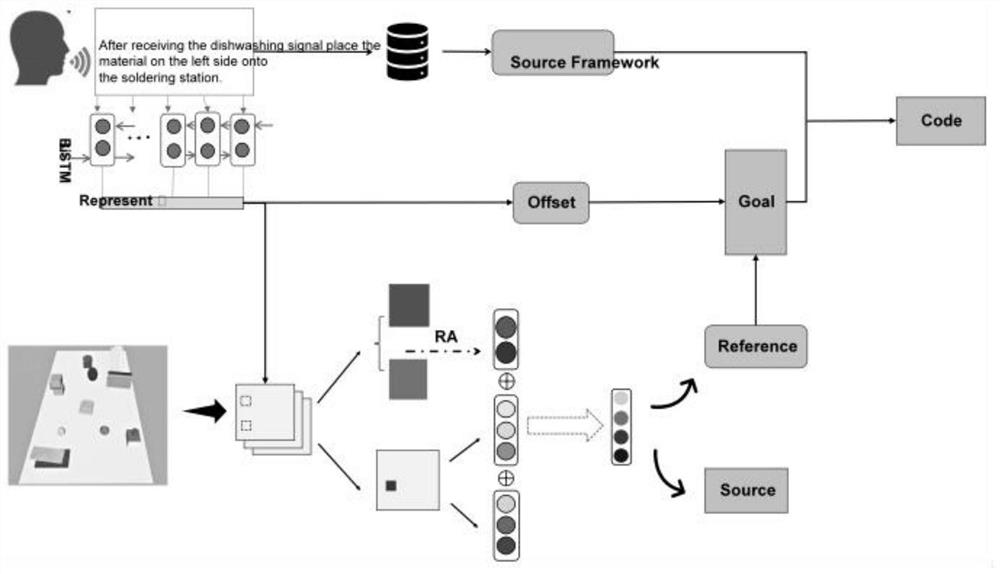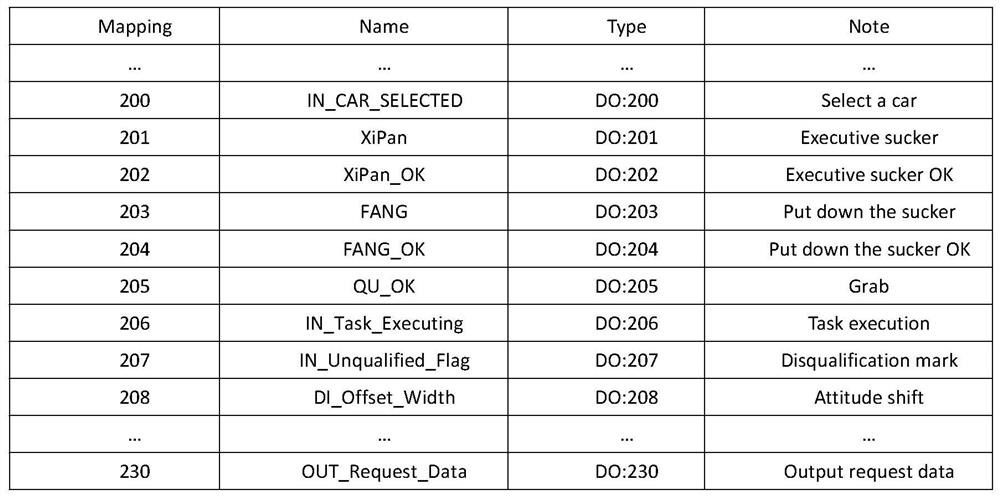Natural Language-Based Auxiliary Programming Method for Industrial Robots
An industrial robot and natural language technology, applied in the field of robot programming, can solve the problems of not being able to meet the needs of industrial intelligent manufacturing, not providing source codes for industrial engineers, and unfavorable reuse of similar codes, so as to improve development efficiency and simplify programming complexity , the effect of simplifying the development burden
- Summary
- Abstract
- Description
- Claims
- Application Information
AI Technical Summary
Problems solved by technology
Method used
Image
Examples
Embodiment Construction
[0023] The present invention includes three subtasks, and the present invention will be further described below in conjunction with the accompanying drawings and embodiments.
[0024] figure 1 It is a structural schematic diagram of the overall model of the present invention.
[0025] The inventive method is divided into three connected subtasks, and the concrete steps are as follows:
[0026] Task 1. Identify the target object
[0027] Step (1), preprocessing the input language instruction and environment image. The preprocessing includes using Bi-RNN with LSTM to extract the language features of language instructions and using F-RCNN to preprocess the environment image, so as to obtain target candidate region features. Specific steps are as follows:
[0028] 1.1 Instruction encoding: the instruction I composed of i words i ={x 1 , x 2 , x 3 ,...,x i} Enter the RNN network. Recursively generate hidden state sequence I by encoding language instructions via Bi-RNN wit...
PUM
 Login to View More
Login to View More Abstract
Description
Claims
Application Information
 Login to View More
Login to View More - R&D
- Intellectual Property
- Life Sciences
- Materials
- Tech Scout
- Unparalleled Data Quality
- Higher Quality Content
- 60% Fewer Hallucinations
Browse by: Latest US Patents, China's latest patents, Technical Efficacy Thesaurus, Application Domain, Technology Topic, Popular Technical Reports.
© 2025 PatSnap. All rights reserved.Legal|Privacy policy|Modern Slavery Act Transparency Statement|Sitemap|About US| Contact US: help@patsnap.com



